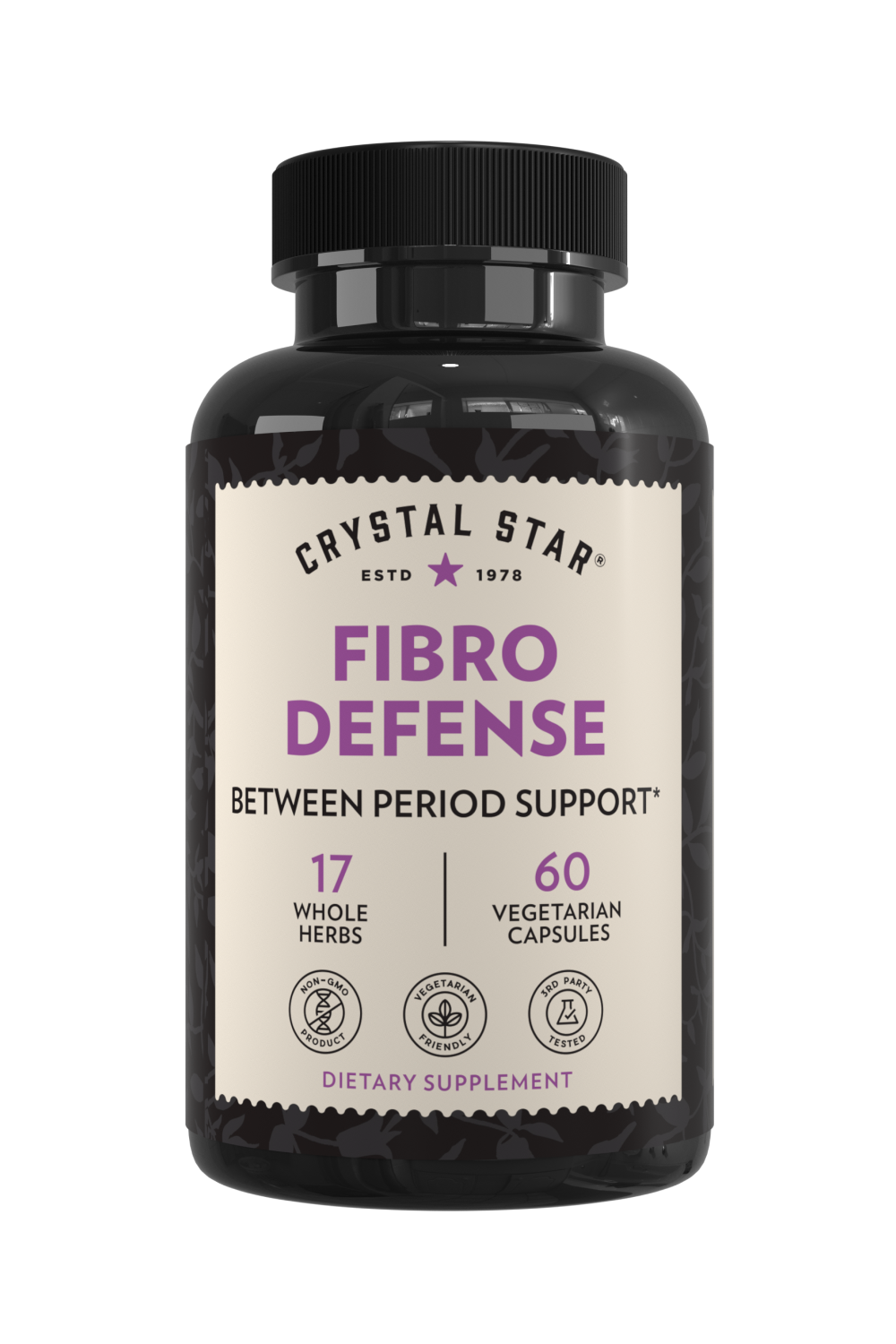
Feb 14, 2020
10 mins read
Can new legislation help the U.S. addiction crisis?
The U.S. addiction crisis is a staple of the national news cycle, and while opioids are often the focus, they aren’t the only problem.
A December 2019 New York Times article asserted that, while federal funds are pouring in to stem the opioid abuse crisis, the rate of methamphetamine (meth) and related stimulant addiction is climbing at a much faster rate.
Yet, prior to late 2019, legislation prevented opioid epidemic funds from being used for other drug addiction crises, meaning that this surge in federal funding couldn’t help the growing rates of meth addiction.
In this article, I’ll explain why less restrictive funding was a necessary change, how the opioid and meth crises are connected, and what this means for our communities. I’ll also discuss why we need to use these funds to look beyond standard medical management techniques and towards effective adjunctive and stand-alone treatments.
 The New York Times article on this subject implied that while we had our eyes on the opioid addiction crisis, addiction to stimulants took the nation by storm.
These stimulants include meth and related prescription amphetamine and dextroamphetamine (Adderall) typically prescribed to treat attention-deficit hyperactivity disorder (ADHD), including children with ADHD (though children prescribed ADHD to-date do not seem at greater risk for substance abuse).
We began funneling resources at the federal and state levels toward addressing the opioid threat, but in doing so we missed the opportunity to mitigate the rapidly worsening meth crisis.
As an example, the article pointed out that the state of Oklahoma was awarded hundreds of millions of dollars in lawsuits against opioid manufacturers, but that much of those funds could only be used to fight opioid addiction. This was despite the fact that, according to the Centers for Disease Control and Prevention, meth and prescription stimulants are now a much bigger problem in the state of Oklahoma than all opioids combined.
The problem of funds being tied up in the opioid crisis while the meth crisis continued to expand required immediate, national attention; it wasn’t just localized to the state of Oklahoma.
The Times article went on to explain that, on a national level, meth has been involved in more deaths than synthetic opioids like oxycodone and hydrocodone. Furthermore, in 40% of the states that report information about overdose-related deaths to the federal government, meth has been involved in more deaths than the most potent opioid, fentanyl.
[socialpug_tweet tweet="On a national level, meth has been involved in more deaths than synthetic opioids." display_tweet="On a national level, meth has been involved in more deaths than synthetic opioids."]
This is why the new legislation passed by congress on December 19, 2019 was so important. In response to the pleas of both constituents and lawmakers, congress voted to expand the scope of a $1.5 billion grant program that was previously restricted to addressing the opioid crisis. As a result of this vote, states can now use these funds to address stimulant addiction as well.
The New York Times article on this subject implied that while we had our eyes on the opioid addiction crisis, addiction to stimulants took the nation by storm.
These stimulants include meth and related prescription amphetamine and dextroamphetamine (Adderall) typically prescribed to treat attention-deficit hyperactivity disorder (ADHD), including children with ADHD (though children prescribed ADHD to-date do not seem at greater risk for substance abuse).
We began funneling resources at the federal and state levels toward addressing the opioid threat, but in doing so we missed the opportunity to mitigate the rapidly worsening meth crisis.
As an example, the article pointed out that the state of Oklahoma was awarded hundreds of millions of dollars in lawsuits against opioid manufacturers, but that much of those funds could only be used to fight opioid addiction. This was despite the fact that, according to the Centers for Disease Control and Prevention, meth and prescription stimulants are now a much bigger problem in the state of Oklahoma than all opioids combined.
The problem of funds being tied up in the opioid crisis while the meth crisis continued to expand required immediate, national attention; it wasn’t just localized to the state of Oklahoma.
The Times article went on to explain that, on a national level, meth has been involved in more deaths than synthetic opioids like oxycodone and hydrocodone. Furthermore, in 40% of the states that report information about overdose-related deaths to the federal government, meth has been involved in more deaths than the most potent opioid, fentanyl.
[socialpug_tweet tweet="On a national level, meth has been involved in more deaths than synthetic opioids." display_tweet="On a national level, meth has been involved in more deaths than synthetic opioids."]
This is why the new legislation passed by congress on December 19, 2019 was so important. In response to the pleas of both constituents and lawmakers, congress voted to expand the scope of a $1.5 billion grant program that was previously restricted to addressing the opioid crisis. As a result of this vote, states can now use these funds to address stimulant addiction as well.
 Methamphetamine, commonly referred to as meth, is an illegal drug that has a stimulating effect on the body. The two most common forms are crystalline powder meth and a shiny, glass-like form called crystal methamphetamine or crystal meth.
The drug is also available in capsules and in a waxy, gooey form known as meth base. The forms of meth that look like crystals or ice tend to be the purest. Meth base and other gooey forms are less pure since they’re diluted with other substances such as caffeine, methyl-sulfonylmethane, or niacinamide.[1] Meth can be smoked, snorted, mixed with alcohol or water and injected intravenously, or swallowed in pill form.
Methamphetamine, commonly referred to as meth, is an illegal drug that has a stimulating effect on the body. The two most common forms are crystalline powder meth and a shiny, glass-like form called crystal methamphetamine or crystal meth.
The drug is also available in capsules and in a waxy, gooey form known as meth base. The forms of meth that look like crystals or ice tend to be the purest. Meth base and other gooey forms are less pure since they’re diluted with other substances such as caffeine, methyl-sulfonylmethane, or niacinamide.[1] Meth can be smoked, snorted, mixed with alcohol or water and injected intravenously, or swallowed in pill form.
Dr. Janelle Louis is a licensed naturopathic doctor who specializes in helping people with childhood trauma overcome the chronic health concerns they are at increased risk for developing, including mental health conditions, reproductive concerns, autoimmune diseases, and metabolic syndrome. Dr. Louis is committed to ensuring that her patients live their healthiest lives in the present in spite of their difficult pasts. References: [1] https://www.ncbi.nlm.nih.gov/pmc/articles/PMC3176304/#R14 [2] https://www.ncbi.nlm.nih.gov/pmc/articles/PMC2413312/ [3] https://www.drugabuse.gov/publications/drugfacts/methamphetamine [4]https://ndews.umd.edu/sites/ndews.umd.edu/files/pubs/NDEWS-Hotspot-Serenity-Lane-Sept2019-FINAL.pdf [5]https://ndews.umd.edu/sites/ndews.umd.edu/files/pubs/NDEWS-Hotspot-Serenity-Lane-Sept2019-FINAL.pdf [6] https://www.ncbi.nlm.nih.gov/pmc/articles/PMC3197716/ [7] https://www.ncbi.nlm.nih.gov/pubmed/22566521 [8] https://www.ncbi.nlm.nih.gov/pmc/articles/PMC5689455/ [9] https://www.ncbi.nlm.nih.gov/pmc/articles/PMC3229764/ [10] https://www.ncbi.nlm.nih.gov/pubmed/10511066 [11] https://www.ncbi.nlm.nih.gov/pmc/articles/PMC3036556/ [12] https://www.drugabuse.gov/publications/principles-drug-addiction-treatment-research-based-guide-third-edition/principles-effective-treatment
What’s going on with the meth crisis in America?
 The New York Times article on this subject implied that while we had our eyes on the opioid addiction crisis, addiction to stimulants took the nation by storm.
These stimulants include meth and related prescription amphetamine and dextroamphetamine (Adderall) typically prescribed to treat attention-deficit hyperactivity disorder (ADHD), including children with ADHD (though children prescribed ADHD to-date do not seem at greater risk for substance abuse).
We began funneling resources at the federal and state levels toward addressing the opioid threat, but in doing so we missed the opportunity to mitigate the rapidly worsening meth crisis.
As an example, the article pointed out that the state of Oklahoma was awarded hundreds of millions of dollars in lawsuits against opioid manufacturers, but that much of those funds could only be used to fight opioid addiction. This was despite the fact that, according to the Centers for Disease Control and Prevention, meth and prescription stimulants are now a much bigger problem in the state of Oklahoma than all opioids combined.
The problem of funds being tied up in the opioid crisis while the meth crisis continued to expand required immediate, national attention; it wasn’t just localized to the state of Oklahoma.
The Times article went on to explain that, on a national level, meth has been involved in more deaths than synthetic opioids like oxycodone and hydrocodone. Furthermore, in 40% of the states that report information about overdose-related deaths to the federal government, meth has been involved in more deaths than the most potent opioid, fentanyl.
[socialpug_tweet tweet="On a national level, meth has been involved in more deaths than synthetic opioids." display_tweet="On a national level, meth has been involved in more deaths than synthetic opioids."]
This is why the new legislation passed by congress on December 19, 2019 was so important. In response to the pleas of both constituents and lawmakers, congress voted to expand the scope of a $1.5 billion grant program that was previously restricted to addressing the opioid crisis. As a result of this vote, states can now use these funds to address stimulant addiction as well.
The New York Times article on this subject implied that while we had our eyes on the opioid addiction crisis, addiction to stimulants took the nation by storm.
These stimulants include meth and related prescription amphetamine and dextroamphetamine (Adderall) typically prescribed to treat attention-deficit hyperactivity disorder (ADHD), including children with ADHD (though children prescribed ADHD to-date do not seem at greater risk for substance abuse).
We began funneling resources at the federal and state levels toward addressing the opioid threat, but in doing so we missed the opportunity to mitigate the rapidly worsening meth crisis.
As an example, the article pointed out that the state of Oklahoma was awarded hundreds of millions of dollars in lawsuits against opioid manufacturers, but that much of those funds could only be used to fight opioid addiction. This was despite the fact that, according to the Centers for Disease Control and Prevention, meth and prescription stimulants are now a much bigger problem in the state of Oklahoma than all opioids combined.
The problem of funds being tied up in the opioid crisis while the meth crisis continued to expand required immediate, national attention; it wasn’t just localized to the state of Oklahoma.
The Times article went on to explain that, on a national level, meth has been involved in more deaths than synthetic opioids like oxycodone and hydrocodone. Furthermore, in 40% of the states that report information about overdose-related deaths to the federal government, meth has been involved in more deaths than the most potent opioid, fentanyl.
[socialpug_tweet tweet="On a national level, meth has been involved in more deaths than synthetic opioids." display_tweet="On a national level, meth has been involved in more deaths than synthetic opioids."]
This is why the new legislation passed by congress on December 19, 2019 was so important. In response to the pleas of both constituents and lawmakers, congress voted to expand the scope of a $1.5 billion grant program that was previously restricted to addressing the opioid crisis. As a result of this vote, states can now use these funds to address stimulant addiction as well.
What do you need to know about methamphetamine?
 Methamphetamine, commonly referred to as meth, is an illegal drug that has a stimulating effect on the body. The two most common forms are crystalline powder meth and a shiny, glass-like form called crystal methamphetamine or crystal meth.
The drug is also available in capsules and in a waxy, gooey form known as meth base. The forms of meth that look like crystals or ice tend to be the purest. Meth base and other gooey forms are less pure since they’re diluted with other substances such as caffeine, methyl-sulfonylmethane, or niacinamide.[1] Meth can be smoked, snorted, mixed with alcohol or water and injected intravenously, or swallowed in pill form.
Methamphetamine, commonly referred to as meth, is an illegal drug that has a stimulating effect on the body. The two most common forms are crystalline powder meth and a shiny, glass-like form called crystal methamphetamine or crystal meth.
The drug is also available in capsules and in a waxy, gooey form known as meth base. The forms of meth that look like crystals or ice tend to be the purest. Meth base and other gooey forms are less pure since they’re diluted with other substances such as caffeine, methyl-sulfonylmethane, or niacinamide.[1] Meth can be smoked, snorted, mixed with alcohol or water and injected intravenously, or swallowed in pill form.
How does meth affect your body?
Meth acts on the central nervous system (CNS) by increasing the amount of dopamine in areas of the brain called the caudate nucleus, putamen, and ventral striatum.[2] The caudate nucleus plays an important role in learning and in storing and processing memories. The putamen plays an important role in limb movement. The ventral striatum is involved with decision-making and reward-related behavior. Meth’s effect on the dopamine system in these three critical areas is responsible for the movement changes that are associated with the drug as well as behavior reinforcement and its highly addictive nature.What are the signs of meth abuse?
Short-term signs of meth abuse can include decreased appetite, faster heart rate and breathing, increases in blood pressure and body temperature, insomnia, an upsurge in physical activity, and chosen isolation from family and friends. Signs of meth abuse in the long term include extreme weight loss, severe dental problems (known as “meth mouth”) due to a decrease in protective saliva with drug use and poor oral hygiene while under the influence of the drug, anxiety, intense itching that leads to scratching and sores on the skin, changes in brain structure and function, paranoia, hallucinations, confusion, memory loss, and problems with sleep.[3] Because meth can be injected intravenously, complications of addiction include blood-borne diseases like HIV and Hepatitis B and C. This is particularly of concern when needles are shared between individuals.How are the opioid and meth crises interconnected?
Opioids depress the central nervous system, which is why many people think of them as “downers.” Meth, on the other hand, is referred to as an “upper” because it stimulates the central nervous system. The opioid and meth crises are interconnected for two reasons. The first is that people have been combining depressants and stimulants for years in an attempt to get a more significant high. The second, and more recent reason, is that people may be combining meth and related stimulants with opioids in an attempt to decrease opioids’ depressant effects.[4] This second reason may in part be because we’ve done such a great job warning people about the dangers of illegal opioids (like heroin) and prescription opioids (like fentanyl). As a result, opioid users turn to meth and other stimulants to try to counteract an opioid’s dangerous effects. These include respiratory arrest (when a person stops breathing), confusion, decreased alertness, and loss of consciousness.[5] [socialpug_tweet tweet="Opioid users may turn to stimulants to try to counteract an opioid’s dangerous effects." display_tweet="Opioid users may turn to stimulants to try to counteract an opioid’s dangerous effects."] The logic behind this combination is based on the false and damaging belief that an upper like meth cancels out the effects of downers like heroin and fentanyl. Unfortunately, however, this isn’t exactly how it works. Preliminary data suggests that using depressants like the opiate morphine along with stimulants like meth has been responsible for many deaths and that the effects of using them together may be worse than using one or the other alone.[6]Abuse of prescription depressants and stimulants
Abuse of prescription depressants and stimulants is fairly common, even among the very young. In national surveys, 12.9% of high school seniors reported recreational use of prescription opioids, 7.9% reported recreational use of prescription amphetamine, and 6.9% reported recreational use of prescription Adderall.[7] [8] [socialpug_tweet tweet="12.9% of high school seniors reported recreational use of prescription opioids." display_tweet="12.9% of high school seniors reported recreational use of prescription opioids."] The researchers who conducted these surveys noted that non-medical use of prescription drugs may be underreported, especially among this population, and that it may actually be as high as 9.8%. These prescription drugs are highly addictive, and individuals taking them outside of a physician’s care are at high risk for addiction. This is because the body becomes less responsive to the drugs over time and the person needs to take more and more to achieve the same results. In the case of opioids, the body can become so tolerant to the drug that an individual may require a more than ten-fold higher dose in order to achieve the effects they experienced when the person first started taking the drug.[9] The body develops tolerance to stimulants as well. Research suggests that tolerance to stimulants like Ritalin and Concerta (methylphenidate) develops just hours after taking a single dose.[10] In addition to causing tolerance to the medication, prescription stimulants lead to tolerance to the body’s own dopamine concentrations.[11] Because low dopamine is partly responsible for ADHD symptoms, this drug-induced decreased response to dopamine (the body’s feel-good chemical) eventually leads to an increase in ADHD symptoms after stopping the drug. To summarize: when people manipulate dopamine concentrations within the brain by abusing stimulants, the result is tolerance to the drug and decreased response to the body’s own dopamine. As a result, they feel the need for the drug even more, and are at significant risk for addiction.Was opioid legislation limiting stimulant addiction treatment?
Because of restrictions on how federal money for addressing the opioid addiction crisis could be used, we found ourselves in a unique place as a nation. If we did not allocate sufficient resources toward solving the meth problem, rates of stimulant addiction would continue to climb. People would suffer, and costs to the nation in terms of crime, lost work productivity, and health care would continue to increase. Opioid legislation was significantly limiting treatment of stimulant addiction. Now that congress has passed legislation expanding the scope of opioid-designated funds, we have the opportunity to allocate funds toward the rapidly increasing meth crisis in order to stem the tide of stimulant addiction.Conclusion
In closing, the opioid and methamphetamine crises are highly relevant problems that touch all Americans. While the opioid crisis appears to have stabilized in some areas, the meth crisis continues to worsen and has surpassed the opioid crisis in many states. This is why the recent legislation making it possible to allocate opioid funds toward the increasing stimulant crisis was so important. But while this funding increase is vital to addressing both stimulant and opioid addiction, addiction is a complex problem that is seldom solved by one-size-fits all approaches. Effective care requires not only medical detoxification, but a host of multidisciplinary approaches: medication, treatment for related diseases and health conditions, monitoring for relapse, and mental health and possibly legal support.[12] These many requirements for successful recovery means that we need to start looking outside the typical means of medical management. Allocating funds toward finding other viable adjunctive and stand-alone therapies is vital to not only treat drug addiction, but to reduce or prevent the long-term effects associated with drug use.Dr. Janelle Louis is a licensed naturopathic doctor who specializes in helping people with childhood trauma overcome the chronic health concerns they are at increased risk for developing, including mental health conditions, reproductive concerns, autoimmune diseases, and metabolic syndrome. Dr. Louis is committed to ensuring that her patients live their healthiest lives in the present in spite of their difficult pasts. References: [1] https://www.ncbi.nlm.nih.gov/pmc/articles/PMC3176304/#R14 [2] https://www.ncbi.nlm.nih.gov/pmc/articles/PMC2413312/ [3] https://www.drugabuse.gov/publications/drugfacts/methamphetamine [4]https://ndews.umd.edu/sites/ndews.umd.edu/files/pubs/NDEWS-Hotspot-Serenity-Lane-Sept2019-FINAL.pdf [5]https://ndews.umd.edu/sites/ndews.umd.edu/files/pubs/NDEWS-Hotspot-Serenity-Lane-Sept2019-FINAL.pdf [6] https://www.ncbi.nlm.nih.gov/pmc/articles/PMC3197716/ [7] https://www.ncbi.nlm.nih.gov/pubmed/22566521 [8] https://www.ncbi.nlm.nih.gov/pmc/articles/PMC5689455/ [9] https://www.ncbi.nlm.nih.gov/pmc/articles/PMC3229764/ [10] https://www.ncbi.nlm.nih.gov/pubmed/10511066 [11] https://www.ncbi.nlm.nih.gov/pmc/articles/PMC3036556/ [12] https://www.drugabuse.gov/publications/principles-drug-addiction-treatment-research-based-guide-third-edition/principles-effective-treatment








